Abstract
A method is needed for measuring the amount of insecticide absorbed by persons exposed to insecticidal spray in order to determine whether they have absorbed dangerous amounts of the toxicant. The expected course of degradation of the insecticide 2-isopropoxyphenyl N-methylcarbamate in vivo by hydrolysis would be to give 2-isopropoxyphenol, which would then be excreted in the urine. A test for the presence of this phenol in urine would provide a method of checking exposure to the insecticide.
Two methods for the determination of this phenol in urine are described in this paper.
By gas chromatography it is possible to examine the steam-volatile phenols present in acid-hydrolysed urine. Normal urine shows peaks corresponding to guaiacol, phenol and p-cresol; the urine of persons who have taken small doses of 2-isopropoxyphenol and 2-isopropoxyphenyl N-methylcarbamate shows an extra peak corresponding to 2-isopropoxyphenol, and the excretion rate of guaiacol is slowed.
This procedure may prove too complex for use in the field. The second part of the paper describes a simpler yet satisfactory colorimetric method of determination which requires only equipment generally available in a chemical laboratory.
Full text
PDF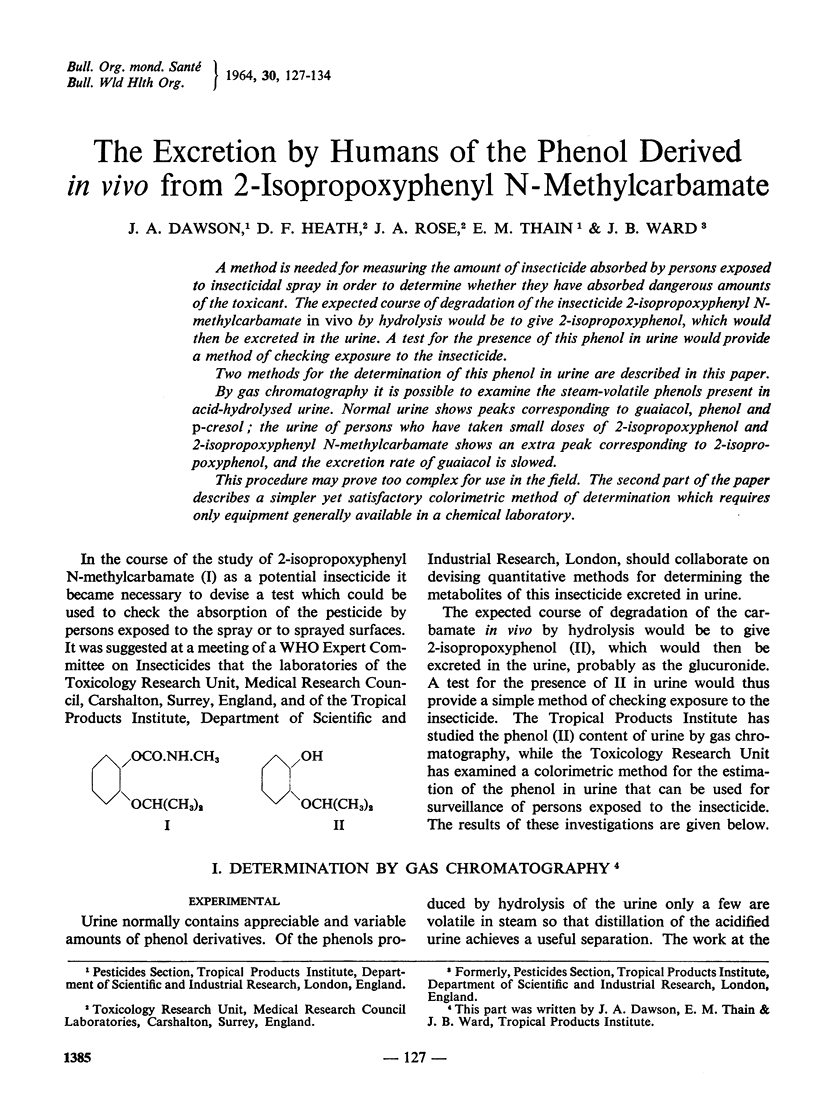
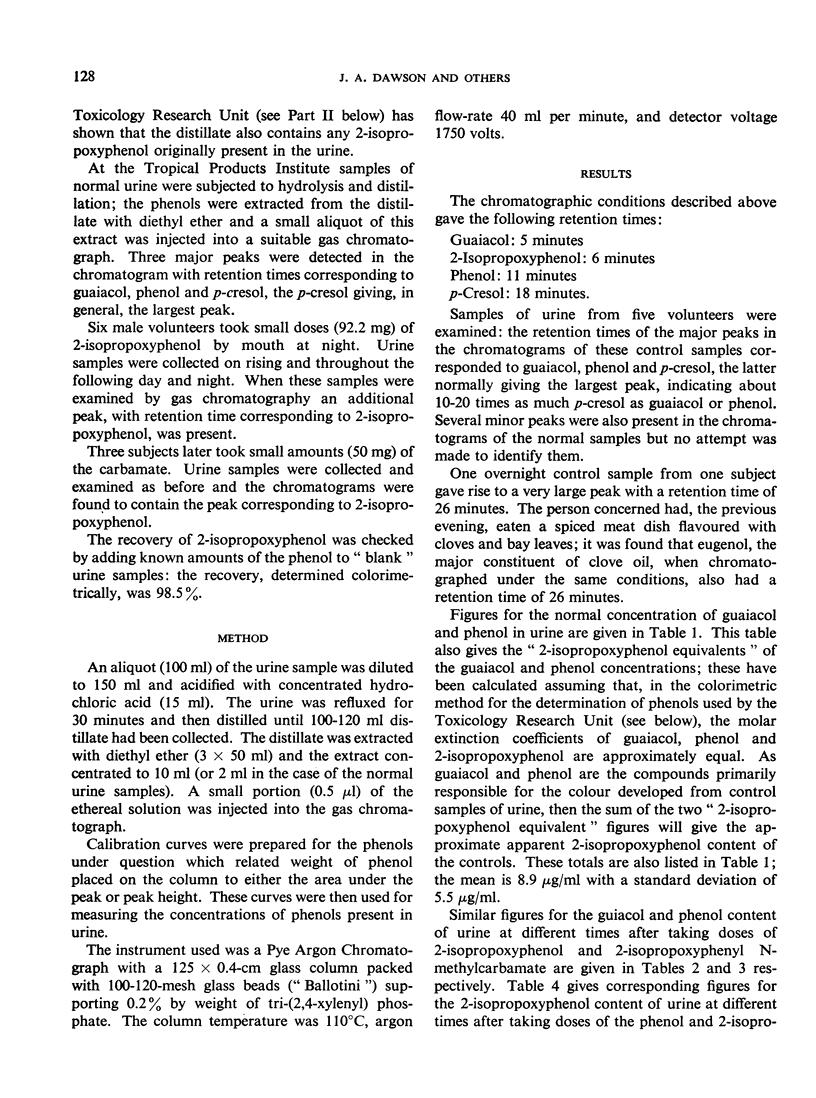
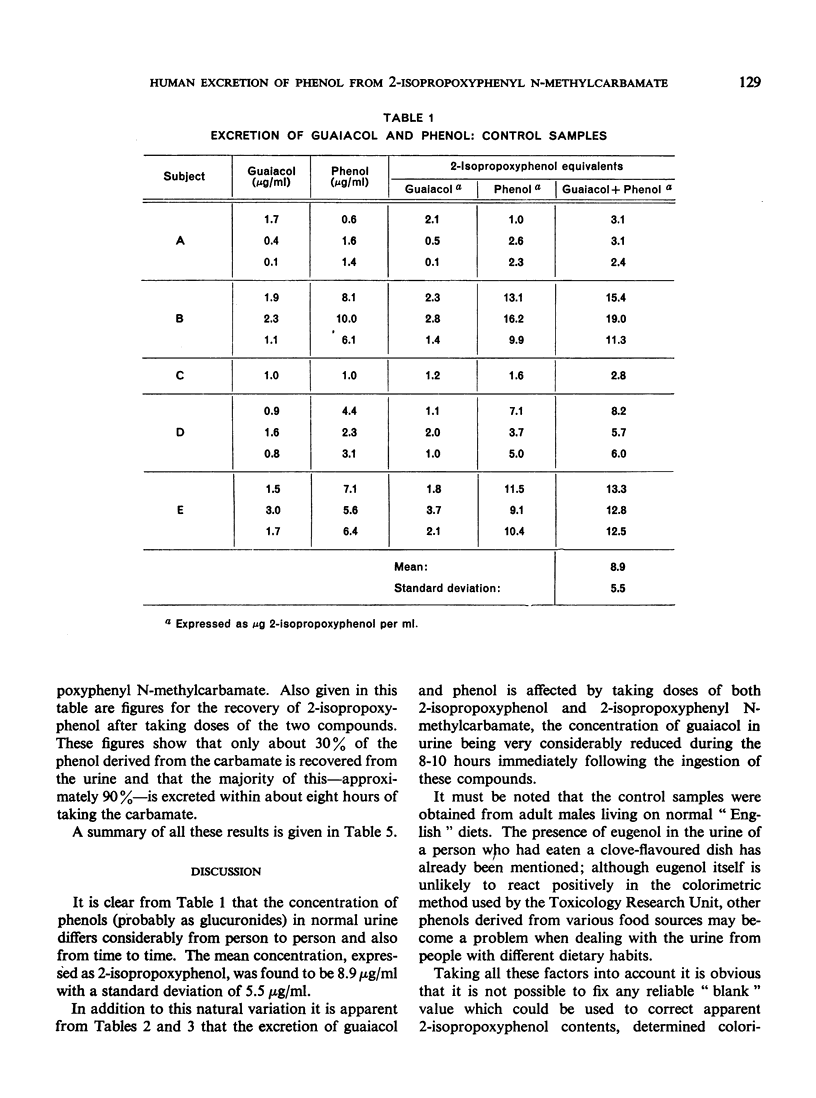
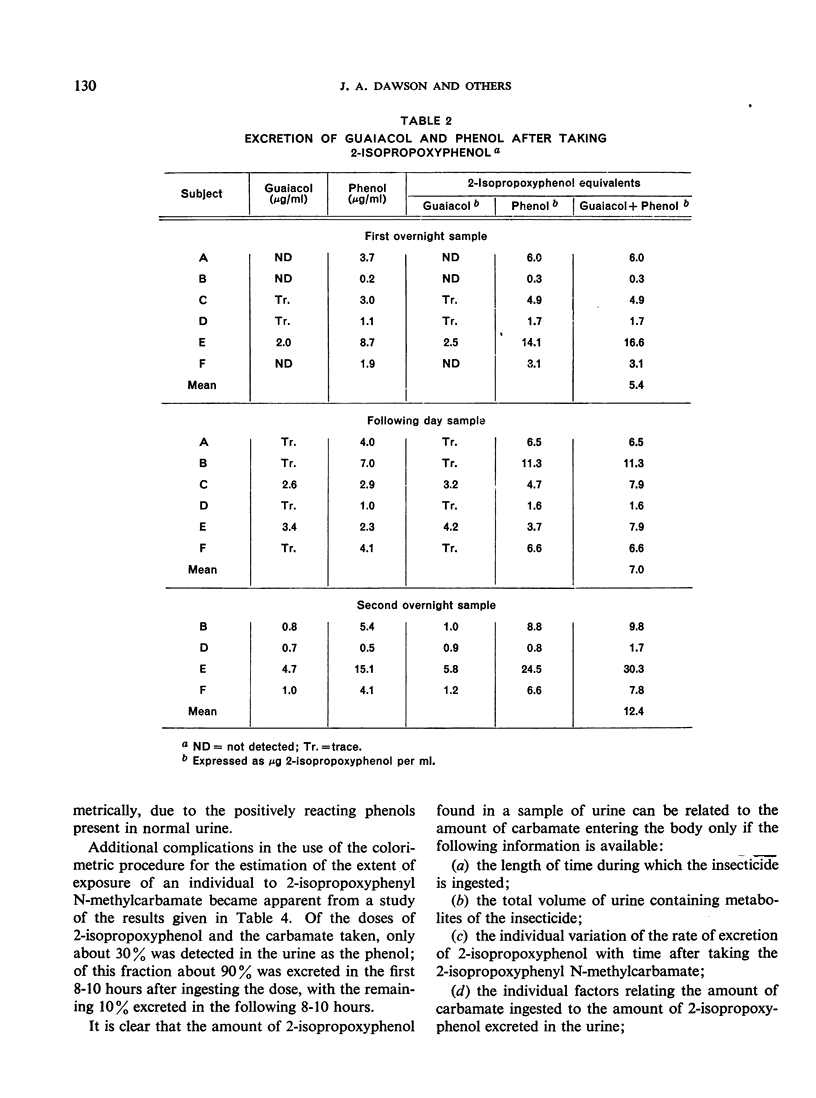
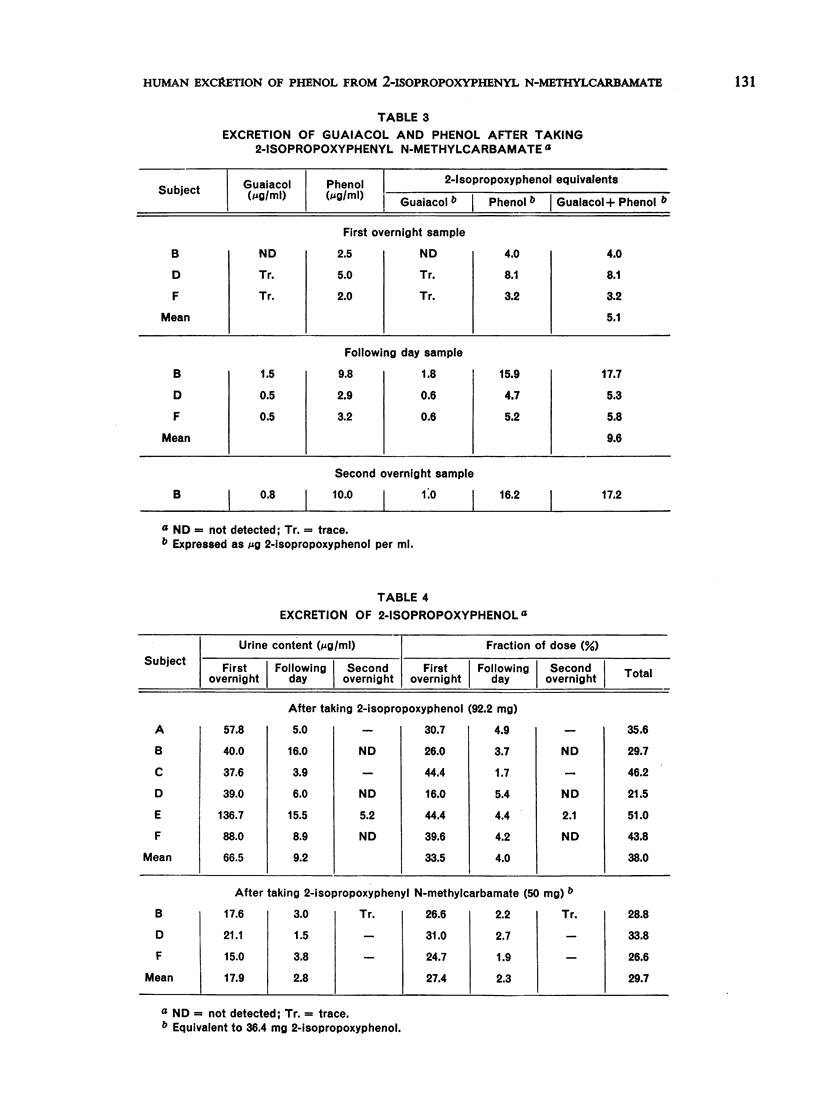

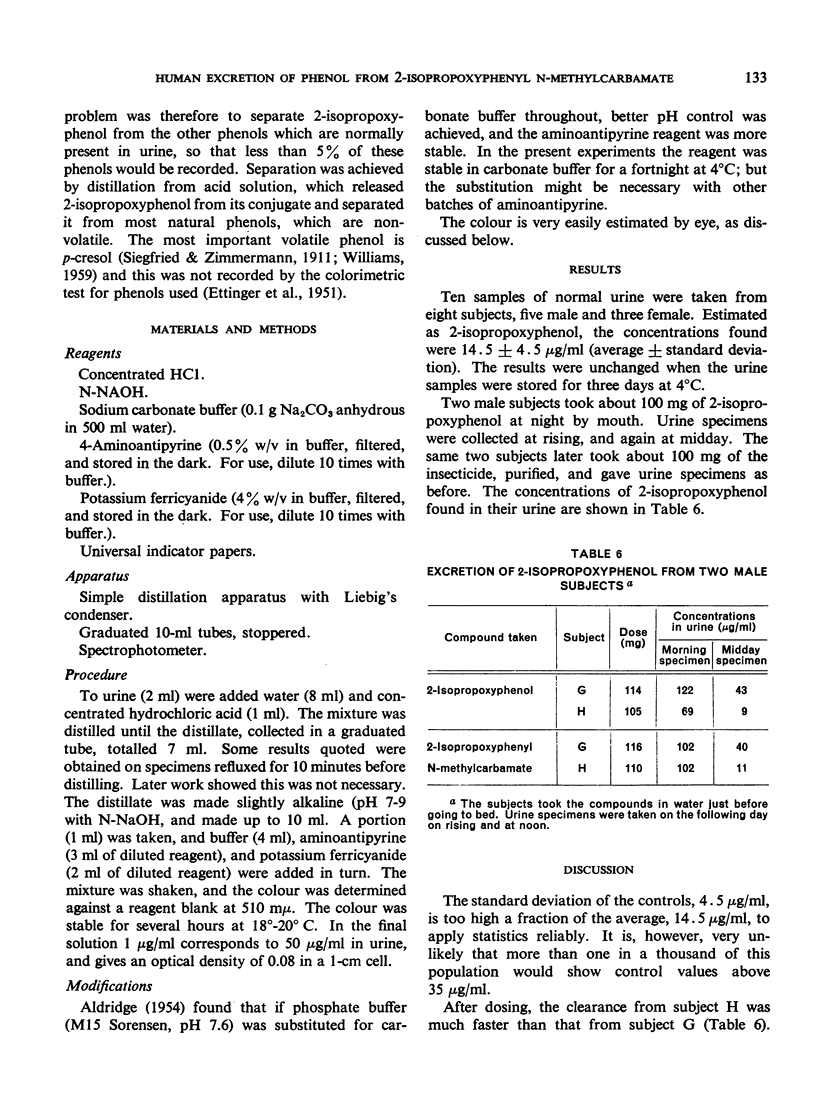
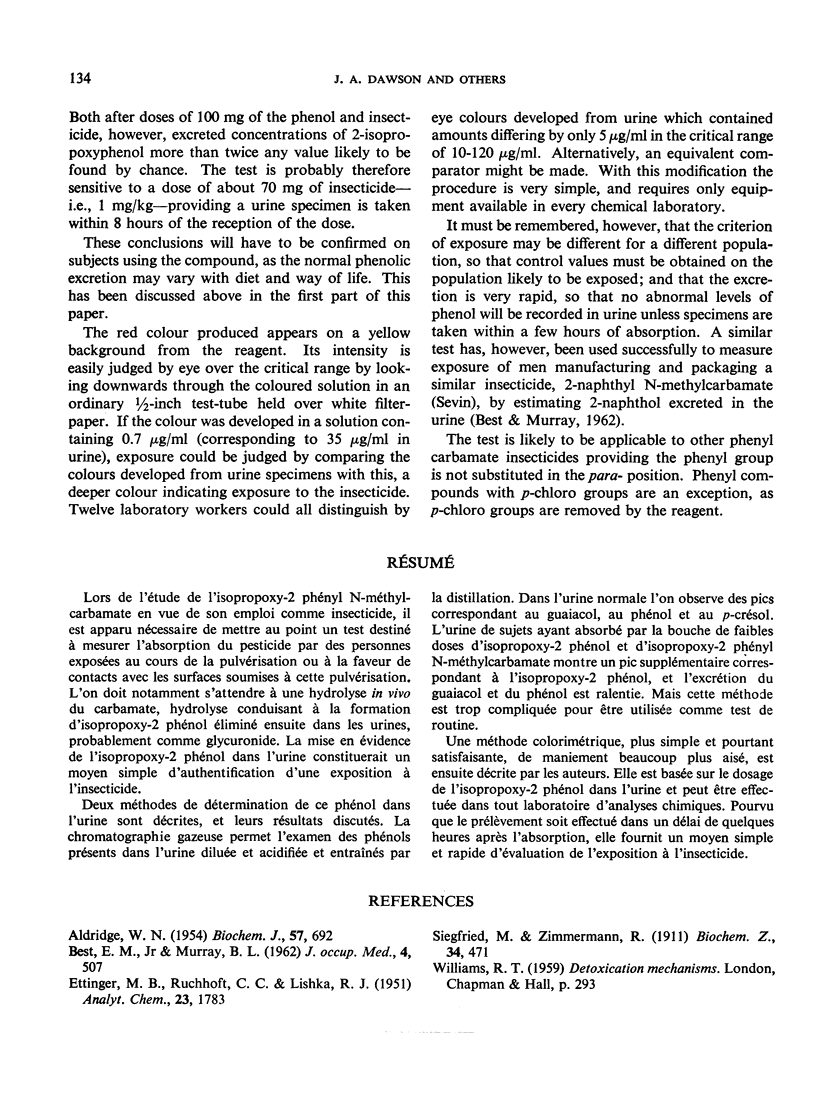
Selected References
These references are in PubMed. This may not be the complete list of references from this article.
- ALDRIDGE W. N. Some esterases of the rat. Biochem J. 1954 Aug;57(4):692–702. doi: 10.1042/bj0570692. [DOI] [PMC free article] [PubMed] [Google Scholar]
- BEST E. M., Jr, MURRAY B. L. Observations on workers exposed to Sevin insecticide: a preliminary report. J Occup Med. 1962 Oct;4:507–517. [PubMed] [Google Scholar]


